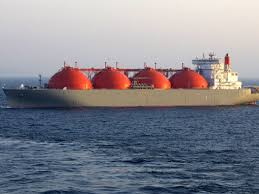A concerted effort by the US gas industry to push LNG on to developing Asian nations is jeopardizing renewable-energy investment across the continent.
General Electric (GE) has been working to persuade Bangladesh to buy its LNG power technology. And Vietnam’s new draft long-term energy plan’s increased focus on liquefied natural gas is included at the expense of solar-power development.
The Bangladeshi government’s signaled move to replace 13 under-construction coal power projects with LNG will see an opportunity to fix its power system missed.
Bangladesh has a growing overcapacity problem in its electricity sector. Power plants receive capacity payments despite lying idle much of the time, pushing up the average cost of electricity. This risks the financial sustainability of the sector, as demonstrated in Pakistan, where capacity payments are on course to reach US$10 billion a year by 2023.
Switching from coal to LNG will do nothing to solve the growing overcapacity issue in Bangladesh.
Furthermore, a shift to LNG would expose Bangladesh to even greater fossil-fuel price volatility. Japan – currently highly dependent on imported LNG – saw its electricity prices surge to record levels in January as LNG prices spiked.
Bangladesh’s new Eighth Five-Year Plan highlights that further reliance on imported LNG and coal will increase the cost of electricity generation. The result will be higher electricity prices for consumers or further subsidies – an unsustainable burden on Bangladesh’s economy.
The high cost of LNG is already causing Bangladesh’s fossil fuel subsidies to increase unsustainably.
The new Five-Year Plan also notes that fossil-fuel subsidies have held back renewable-energy development in Bangladesh. The nation’s Sustainable and Renewable Energy Development Authority (SREDA) is now recommending a new solar target to address this.
SREDA’s draft National Solar Energy Roadmap recommends aiming for a high-deployment solar installation target of up to 30,000 megawatts by 2041. However, this target risks being crowded out by an increased focus on LNG-fired power investment.
Amid continued growth in electricity demand, a switch in focus to renewable energy could help address overcapacity relative to the continued rollout of large fossil-fuel-fired power stations if it’s also accompanied by grid investment to make better use of existing capacity.
LNG pushing out solar in Vietnam’s new power plan
Vietnam was able to add an astonishing 9,000MW of rooftop solar in 2020. However, despite Vietnam’s major renewable-energy installation achievements, solar-power development is now at risk from an increased focus on LNG.
Like Bangladesh, Vietnam has been scaling back focus on coal-fired power as more banks distance themselves from coal finance and because of the very long development timeframes of such projects.
Vung Ang 2, one of the latest coal power projects to have concluded the pre-investment phase, required 12 years for the sponsors and Vietnamese state agencies to reach an agreement on the contract terms alone. A further five years is expected for the plant’s construction, without accounting for new construction risks.
However, new LNG-fired power proposals are more challenging to execute than coal power. The need for new associated, additional infrastructure – regasification, storage, pipelines, and market development – means new LNG-fired power proposals can’t be implemented at the rate suggested by project sponsors promoting overambitious targets.
While many conventional coal and LNG power projects in Vietnam failed to progress during the development process, only managing to meet half of the country’s targeted capacity for 2016-2020, solar power developers over-delivered by five times, in a fraction of the time.
Notwithstanding this, Vietnam’s latest draft long-term power plan (Power Development Plan VIII) sees increased LNG-fired power ambition crowding out solar. A total of 18GW of LNG-fired power is now planned to be added by 2030 while solar additions are suddenly capped at just 2GW.
Like Bangladesh, Vietnam would benefit from a switch in focus away from more lengthy, large-scale fossil-fueled power additions and toward grid and battery-storage investment. This would enable a continuation of Vietnam’s solar and wind development progress rather than a curtailment.
It would also enable the nation to optimize investments in the renewables-plus-storage technologies that are expected to see sharply declining costs over the coming decade.
However, if the emphasis switches to LNG, Vietnam will face much the same set of risks it faced when its focus was on coal, with the added problem of increased fuel-price volatility and massive new investments required to build a full value-chain of LNG infrastructure.
A switch from one fossil fuel to another that is exposed to even greater price risk does nothing to improve the sustainability of a power system exposed to capacity payments, large financial losses and government subsidies.
Developing Asian nations do not need growing fossil-fuel subsidies dialing up stress on government finances and necessitating power tariff hikes that impact consumers and businesses.
Instead, nations like Bangladesh and Vietnam will be better served by ever-cheaper modern technology that can reduce the cost of electricity generation and support their development. That means the focus must be on cheaper renewable energy.

 Iran Energy News Oil, Gas, Petrochemical and Energy Field Specialized Channel
Iran Energy News Oil, Gas, Petrochemical and Energy Field Specialized Channel



